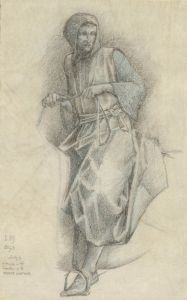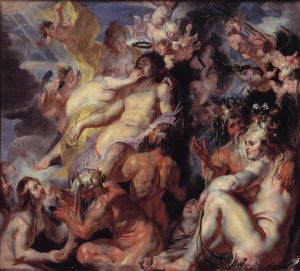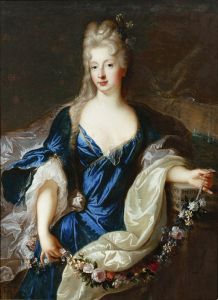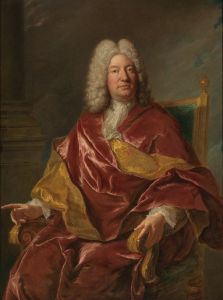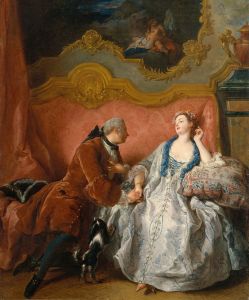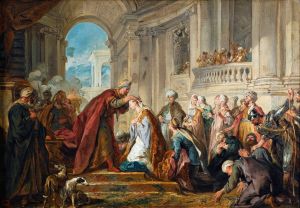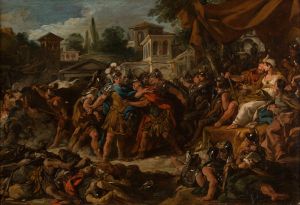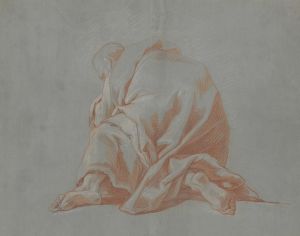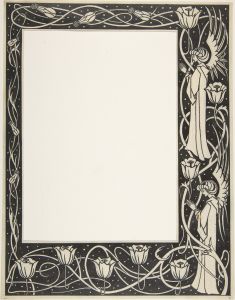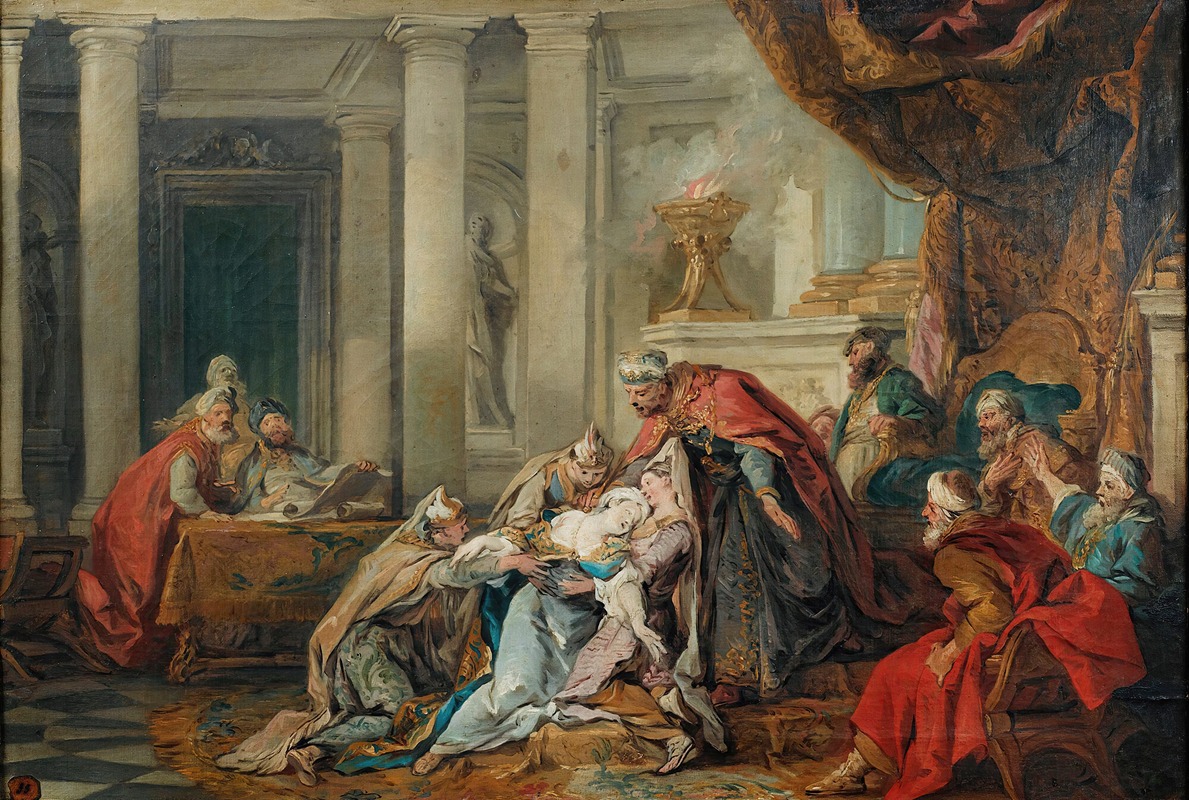
The fainting of Esther
A hand-painted replica of Jean-François de Troy’s masterpiece The fainting of Esther, meticulously crafted by professional artists to capture the true essence of the original. Each piece is created with museum-quality canvas and rare mineral pigments, carefully painted by experienced artists with delicate brushstrokes and rich, layered colors to perfectly recreate the texture of the original artwork. Unlike machine-printed reproductions, this hand-painted version brings the painting to life, infused with the artist’s emotions and skill in every stroke. Whether for personal collection or home decoration, it instantly elevates the artistic atmosphere of any space.
Jean-François de Troy was a prominent French painter and tapestry designer of the early 18th century, known for his dynamic compositions and mastery in depicting historical and mythological scenes. One of his notable works is "The Fainting of Esther," which captures a dramatic moment from the biblical story of Esther, a narrative found in the Old Testament.
"The Fainting of Esther" illustrates a pivotal scene from the Book of Esther, where Queen Esther, the Jewish queen of the Persian King Ahasuerus, faints after bravely approaching the king without being summoned. This act was perilous, as it could have led to her execution, but Esther risked her life to plead for the safety of her people. The painting captures the tension and drama of this moment, emphasizing Esther's courage and the emotional weight of her actions.
Jean-François de Troy's depiction is characterized by its vivid use of color and dramatic composition, elements that were hallmarks of his style. The painting likely features Esther at the center, surrounded by figures reacting to her sudden fainting. The artist's skillful use of light and shadow would have been employed to highlight Esther's figure, drawing the viewer's attention to her plight and the gravity of the situation. The expressions and gestures of the surrounding figures would convey a sense of urgency and concern, enhancing the emotional impact of the scene.
De Troy was known for his ability to convey narrative through his paintings, and "The Fainting of Esther" is no exception. His work often included rich details that provided context and depth to the story being told. In this painting, the opulent setting and the attire of the figures would reflect the Persian court's grandeur, adding to the historical authenticity and visual appeal of the work.
While specific details about the creation and current location of "The Fainting of Esther" are not widely documented, Jean-François de Troy's contributions to art during his time were significant. He was a member of the prestigious Académie Royale de Peinture et de Sculpture and served as the director of the French Academy in Rome, positions that underscored his influence and reputation in the art world.
De Troy's works, including "The Fainting of Esther," are celebrated for their ability to capture the essence of the stories they depict, combining technical skill with a keen sense of drama and emotion. His paintings continue to be studied and appreciated for their artistic merit and historical significance, offering insights into the cultural and artistic milieu of 18th-century France.





